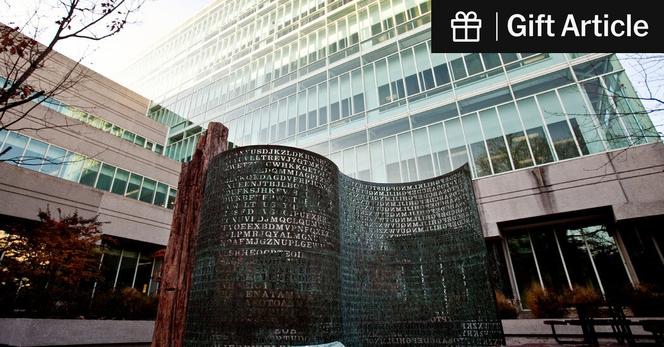Hello Fellow Mastolorians!
Suppose you had a friend with an interest in *history* who wanted to know more about cybersecurity.
What would you use as a good introduction to the topic?
Here’s a suggestion . . .
The Woman Who Smashed Codes: A True Story of Love, Spies, and the Unlikely Heroine Who Outwitted America's Enemies
by Jason Fagone
When asked “What drew you to this story?” — author Jason Fagone answered:
“Well, it’s one of these amazing American origin stories. A hundred years ago, a young woman in her early twenties [Elizebeth Smith Friedman] suddenly became one of the greatest codebreakers in the country. She taught herself how to solve secret messages without knowing the key. Even though she started out as a poet, not a mathematician, she turned out to be a genius at solving these very difficult puzzles, and her solutions ended up changing the 20th century. She helped us win the world wars. And she also shaped the intelligence community as we know it today.”
An NPR Best Book of 2017
“In The Woman Who Smashed Codes, Jason Fagone chronicles the life of this extraordinary woman, who played an integral role in our nation’s history for forty years. After World War I, Smith used her talents to catch gangsters and smugglers during Prohibition, then accepted a covert mission to discover and expose Nazi spy rings that were spreading like wildfire across South America, advancing ever closer to the United States. As World War II raged, Elizebeth fought a highly classified battle of wits against Hitler’s Reich, cracking multiple versions of the #Enigma machine used by German spies.”
Seriously, I thought this book was fantastic. Elizebeth Friedman’s team saved at least 8,000 lives when the Queen Mary was being hunted by German U-boats, and she directly helped stop the Nazification of South America. She became — by far — America’s most famous #codebreaker during her lifetime, with stories about her appearing in national magazines and newspapers all over the country.
This is a thoroughly enjoyable, great read! Probably the best single book for anyone starting out, trying to gain an understanding of the historical landscape of the subject. It definitely helps the reader imagine the through-lines running from the past up to the current time. It’s extremely accessible for the interested, non-technical reader. This account of Elizebeth Friedman’s life and accomplishments is “page-turning, popular history at its finest.”
#ElizebethFriedman
#BookReview
#Bookstodon
#codebreaking
Amazon:
https://www.amazon.com/Woman-Who-Smashed-Codes-Outwitted/dp/0062430513/ref=sr_1_1?crid=G665BQ395JVO&keywords=the+woman+who+smashed+codes&qid=1667860739&sprefix=woman+who+smashed%2Caps%2C178&sr=8-1
Note: This is *not* an affiliate link. I’m simply recommending this high-quality book for those who might find it interesting.
Jason Fagone’s pinned Twitter thread about Elizebeth Friedman: https://twitter.com/jfagone/status/912361182098542592
Jason Fagone’s Substack: https://jfagone.substack.com/






